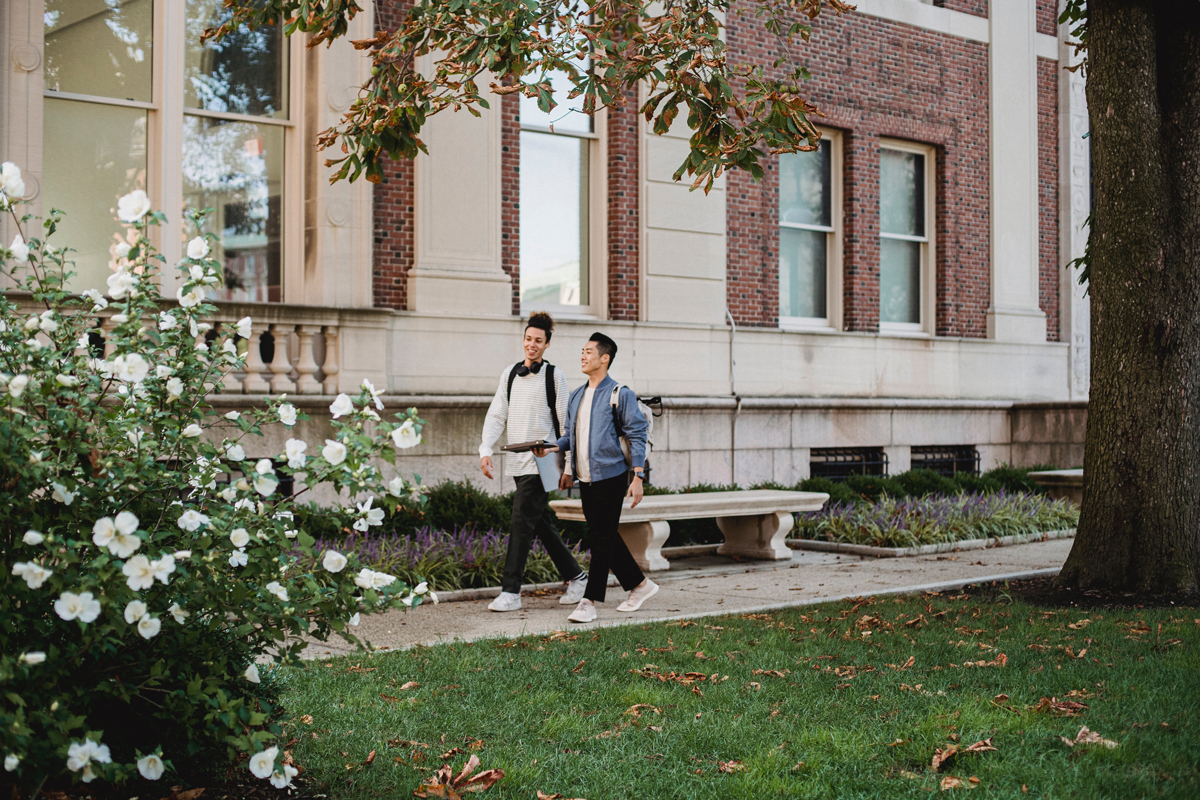4 Brainy Back-to-School Poems for Students
Back-to-school season conjures feelings of excitement and exploration. As students make their way back into the classroom, they’re presented with the opportunity to learn about new topics and interests, grow friendships, and get involved in activities. These four poems celebrate all that a fresh school year represents.
1. “The Hand” by Mary Ruefle
In “The Hand,” Guggenheim and National Endowment for the Arts fellow Mary Ruefle reflects on the more contemplative moments of school life, appreciating a quiet moment of privacy and peace amidst frenzied settings. “You look out the window. / You don’t raise your hand and there is / some essential beauty in your fingers, / which aren’t even drumming, but lie / flat and peaceful,” writes Ruefle.
The speaker reveres her setting as a place of wonder, illustrating, “. . . Outside the window, on an overhanging branch, / a robin is ruffling its feathers / and spring is in the air.”
2. “Art Class” by James Galvin
“Art Class” meditates on the power of art and creativity, positioning youthful imagination as just as valuable and important as reality. “Let us begin with a simple line, / Drawn as a child would draw it, / To indicate the horizon, / More real than the real horizon,” writes Galvin.
Galvin’s poem endows this idea with a sense of fascination and fervor, exclaiming, “The line ravishes the page with implications / Of white earth, white sky! / The horizon moves as we move, / Making us feel central.”
3. “The Young Poets of Winnipeg” by Naomi Shihab Nye
“The Young Poets of Winnipeg” casts second-grade students as blossoming artists at a makeshift literary salon. Naomi Shihab Nye, who was previously named Young People’s Poet Laureate of the United States by the Poetry Foundation, showcases her admiration for young people in this poem, remarking on their brilliance, confidence, and bravado.
“They introduced one another, perched on a tiny stage / to read their work, blessed their teacher who / encouraged them to stretch, wouldn’t let their parents / attend the reading because parents might criticize,” writes Nye. She continues by showcasing the reverence and curiosity that occurs when students explore both the imagery of the natural world and mystical, otherworldly metaphors. “[They] believed in the third and fourth eyes, the eyes in / the undersides of leaves, the polar bears a thousand miles north, / and sprouts of grass under the snow. They knew their poems / were glorious.”
4. “The World Book” by Patricia Hooper
Award-winning writer Patricia Hooper is known for authoring both gorgeous poetry collections and whimsical children’s books. This genre-bending background reveals itself in “The World Book,” where Hooper uses a classroom setting as a window to a magical and immersive world.
Hooper enhances the poem’s playful sonic qualities by employing alliteration, and she uses the childlike lens of the alphabet as a metaphor system for the poem. “The sun / shown as a sun should, / and we sat down at the table / leafing through silks and ships, / saints and subtraction,” describes Hooper. “We passed / Scotland and Spain, street- / cars and seeds and even / the Seven Wonders until / the woman who owned them skipped / to the solar system and said / it could be ours.”
Happy back-to-school season! Bring poetry into the classroom this year.




